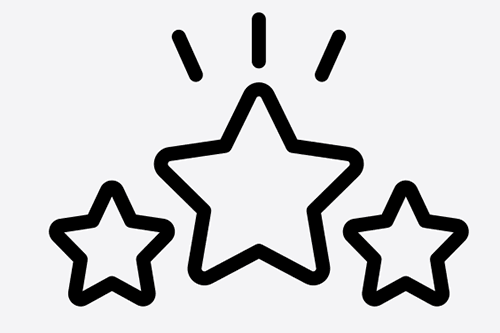Have you ever wondered why your favorite glow in the dark t-shirt glows? Or ever wondered why you have to "charge it up" before you can impress your friends with its stunning glow? Ever wondered what would happen to it if you stood in red light instead of white light? Well, this experiment will answer all those questions and more.

Glow in the Dark
Energy levels of the rainbow
This resource was originally published in PhysicsQuest 2009: Power!
What colors of light cause a glow in the dark square to glow?
- Phosphorescent vinyl
- Red, blue, orange and purple gel filters
- Laser pointer
- Dark room
- White light
- (Optional): glow in the dark stars, glow in the materials
- To get a glow in the dark material to glow, what do you have to do first?
To get a glow in the dark material to glow, what do you have to do first?
- Will just any material glow, or does it have to be special?
Will just any material glow, or does it have to be special?
- Why is a rainbow in the order that we see?
Why is a rainbow in the order that we see?
- Get all materials ready to use
Get all materials ready to use.
- Hold the vinyl square up to a white light
Hold the vinyl square up to a white light. Turn off the lights and look at the square. What is happening? What color is it glowing?
- Place one color of gel filter on each corner of the vinyl and again hold it up to the white light
Wait for the vinyl to stop glowing. Place one color of gel filter on each corner of the vinyl and again hold it up to the white light for several minutes. While you are waiting, draw a picture indicating which color is on which part of the vinyl. Which color gel filter do you think will allow the square to glow? Why?
- Take the gel filters off and take it into a dark room
Take the gel filters off and take it into a dark room. In your drawing, indicate which sections of the square are glowing.
- Again charge up the square in white light, this time, with no gel filters...
Again charge up the square in white light, this time, with no gel filters, and take the square and a laser pointer into a dark room. “Write” on the square with the laser pointer, what happens? Thinking back to the experiment with the gel filters, is red light more or less energetic than green light? How is it possible to make the square glow green by applying red light?
- What were your results?
What were your results?
- When you charge up the square and then put it in a dark room, why is it glowing?
- When you put the gel filters over the square you only allowed light of certain colors to get through and charge up the square. Which colors charged up the square and made it glow?
- Did you get the same results every time?
Did you get the same results every time? Why or why not?
- Additional observations
Additional observations.
- Write down the colors of the rainbow in order. Circle the colors that allowed the square to glow
Write down the colors of the rainbow in order. Circle the colors that allowed the square to glow and cross out the colors that did not.
- Do you see a pattern? Describe it.
- In a rainbow, violet light has the most energy and red light has the least. What can you say about the energy of light that is needed to charge up the square? Does it have to be more or less than green?
- Thinking back to the experiment with the gel filters, is red light more or less energetic than green light? How is it possible to make the square glow green by applying red light?